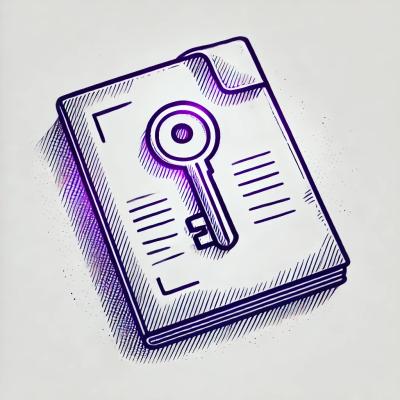
Research
Security News
The Growing Risk of Malicious Browser Extensions
Socket researchers uncover how browser extensions in trusted stores are used to hijack sessions, redirect traffic, and manipulate user behavior.
https://zingchart.github.io/zingtouch
A modern JavaScript touch gesture library. The library allows developers to configure pre-existing gestures as well as create their own using ZingTouch's life cycle.
ZingTouch is built to make implementing gestures for the browser as easy or complex as you need it to be. ZingTouch comes with 6 main gestures :
These gestures can be customized including the number of inputs it accepts, or how sensitive the gesture is to be recognized.
ZingTouch is also has lifecycle events that you can hook into to create new Gestures or to act upon certain touch events. We know supporting touch events across multiple browsers can be a pain; ZingTouch makes it easy by defining 3 hooks to pass callbacks to :
Node / CommonJS
var ZingTouch = require('zingtouch');
or
Include the file
<script src='./path/to/zingtouch.min.js'></script>
or
ES6
import ZingTouch from 'zingtouch';
var zt = new ZingTouch.Region(document.body);
var myElement = document.getElementById('my-div');
zt.bind(myElement, 'tap', function(e){
//Actions here
}, false);
new Region(element, [capture], [preventDefault])
Regions specify an area to listen for all window events. ZingTouch needs to listen to all window events in order to determine if a gesture is recognized. Note that you can reuse regions for multiple elements and gesture bindings. They simply specify an area where to listen for gestures.
Suppose you had an element that you wanted to track gestures on. We set the region on that element along with binding it to a gesture.
var touchArea = document.getElementById('toucharea');
var myRegion = new ZingTouch.Region(touchArea);
myRegion.bind(touchArea, 'swipe', function(e){
console.log(e.detail);
});
The shaded area in blue shows the area where ZingTouch will now listen for events such as touchstart, touchmove, touchend, etc.

But humans aren't perfect. Suppose the element #toucharea were to listen for the Swipe gesture. The tracking of the window events will stop when the user reaches the edges of #toucharea. But what if the user didn't finish until say 10-50px outside the element? Regions are here to help.
Suppose you set the Region to the parent of the #toucharea element instead.
var parentTouchArea = document.getElementById('parent-toucharea')
var touchArea = document.getElementById('toucharea')
var myRegion = new ZingTouch.Region(parentTouchArea);
myRegion.bind(touchArea, 'swipe', function(e){
console.log(e.detail);
});

ZingTouch now tracks the swipe gesture inside the #toucharea element AND the #parent-toucharea. This allows some forgiveness when the user tries to swipe on the #toucharea, but lifts their finger somewhere in the #parent-toucharea.
Note: The swipe gesture can only be initiated on the area it is bound to. This means the user has to being touching the #toucharea element first, but can move out and end within #parent-toucharea and including #toucharea.
Regions only are aware of themselves and their contents, not across regions. This allows for control at a larger scale so you can group similar gestures together. While you can throw a Region on top of the document.body, we suggest splitting up your application into regions for better performance -- the less bindings a single region has to iterate through to detect a gesture, the better.

Gesture classes can be instatiated to generate modified versions.

A tap is detected when the user touches the screen and releases in quick succession.
options.maxDelay optional - The maximum delay between a start and end event. This number is measured in milliseconds.
options.numInputs optional - The number of inputs to trigger the tap event.
options.tolerance optional - A tolerance value which allows the user to move their finger about a radius measured in pixels. This allows the Tap gesture to be triggered more easily since a User might move their finger slightly during a tap event.
new ZingTouch.Tap({
maxDelay: 200,
numInputs: 2,
tolerance: 125
})
interval - a time measured in milliseconds between the start of the gesture, and the end.
A swipe is detected when the user touches the screen and moves in a relatively increasing velocity, leaving the screen at some point before it drops below a certain velocity.
options.numInputs optional - The number of inputs to trigger the event.
options.escapeVelocity optional - The minimum velocity (px/ms) that the gesture has to obtain by the end event.
options.maxRestTime optional - The amount of time allowed in milliseconds inbetween events before a the motion becomes inelligible to be a swipe.
new ZingTouch.Swipe({
numInputs: 2,
maxRestTime: 100,
escapeVelocity: 0.25
});
An array of data objects containing:
velocity - The value in units of pixels per millisecond the gesture was travelling until it's ending point.currentDirection - The angle the swipe ended at in degrees, relative to the unit circle. (e.g. straight down is 270deg while straight left is 180deg).Each index represents an input that participated in the event.

A pinch is detected when the user has two inputs on the screen and moves one or both closer towards the other input.
new ZingTouch.Pinch()
distance - The distance in pixels between the two inputs.
An expand is detected when the user has two inputs on the screen and moves one or both away from the other input.
new ZingTouch.Expand()
expand - The distance in pixels between the two inputs.
A pan is detected when the user touches the screen and moves about the area.
options.numInputs optional - The number of inputs to trigger the event.
options.threshold optional - The minimum number of pixels the input has to move to trigget this gesture.
new ZingTouch.Pan({
numInputs: 2
})
An array of data objects containing:
distanceFromOrigin - The distance in pixels traveled from the current position from the starting position.directionFromOrigin - The angle of the pan in degrees, relative to the unit circle.(e.g. straight down is 270deg while straight left is 180deg). The starting point of where the input began during the "start" event denotes the origin point.currentDirection - The angle of the pan gesture in degrees, relative to the unit circle. The previously emitted point is used as an origin point.Each index represents an input that participated in the event.

A Rotate is detected when:
new ZingTouch.Rotate()
angle - The angle of the initial right most input, in relation to the unit circle.distanceFromOrigin - The angular distance travelled by the initial right most input.distanceFromLast - The change of angle between the last position and the current position. Positive denotes a counter-clockwise motion, while negative denotes a clockwise motion.A generic gesture. By default, this gesture does not emit but is useful for hooking into ZingTouch's life cycle. See ZingTouch Life Cycle for more information.
new ZingTouch.Gesture()
Binds a single element to a gesture, executing the handler when the gesture is emitted.
Parameters
Gesture class itself.event.detail.capture - An optional boolean to designate the event to be fired on the capture or bubbling phase.Example #1
var myRegion = new ZingTouch.Region(document.body);
var myElement = document.getElementById('some-div');
myRegion.bind(myElement, 'tap', function(e) {
console.log('Tap gesture emitted: ' + e.detail.interval);
});
Example #2
var myElement = document.getElementById('some-div');
var myTapGesture = new ZingTouch.Tap({ maxDelay : 100 });
var myRegion = new ZingTouch.Region(document.body);
myRegion.bind(myElement, myTapGesture, function(e) {
console.log('Custom Tap gesture emitted: ' + e.detail.interval);
}, false);
Notes
Region.register syntax -- they essentially do the same thing. Either works fine, but try to avoid using the following pattern where an instance variable is created at every bind ://Poor performance
var delay = 100;
for (var i = 0; i < 100; i++){
myRegion.bind(myElement, new ZingTouch.Tap({maxDelay : delay}),function(e){...});
}
//Better performance
var delay = 100;
var customTap = new ZingTouch.Tap({maxDelay : delay});
for (var i = 0; i < 100; i++){
myRegion.bind(myElement, customTap, function(e){...});
}
Passing a qualified DOM element to the bind function will return an object that can be chainable with the 6 main gestures, or any other gestures that you may have registered with Region.register
Parameters
Returns
handler - A function to be called every time the gesture is emitted.
.tap() ,.swipe() ,.pinch() ,.expand() ,.pan() ,.rotate(). Custom Gesture are accessible using the ZingTouch.register method.event.detail.capture - An optional boolean to designate the event to be fired on the capture or bubbling phase.
Example
var myElement = document.getElementById('mydiv');
var myRegion = new ZingTouch.Region(myElement);
var chainableObject = myRegion.bind(myElement);
chainableObject
.tap(function(e){
console.log(e.detail);
})
.swipe(function(e){
console.log(e.detail);
}, true)
Identical to both method signatures of bind, but is "bound once" meaning the event will only be captured once before it is destroyed.
See Region.bind
Unbinds an element from a specific gesture, or all gestures if none is specified.
Parameters
element - A DOM elementgesture optional - Either a registered gesture's key (String) or the gesture object used to bind the element.Returns
Examples
Unbind from a specific gesture
var myElement = document.getElementById('mydiv');
myRegion.unbind(myElement, 'tap');
Unbind from all gestures
var myElement = document.getElementById('mydiv');
myRegion.unbind(myElement);
Unbind from a gesture instance.
var myElement = document.getElementById('mydiv');
var myRegion = new ZingTouch.Region(document.body);
var myTapGesture = new ZingTouch.Tap({ maxDelay : 100 });
myRegion.bind(myElement, myTapGesture, function(e) {});
myRegion.unbind(myElement, myTapGesture);
Register a gesture of the Gesture class to each Region. Allows the newly registered Gesture to be accessible in the bind/unbind syntax including the chainable object of bind.
Parameters
key - A string to identify the new gesture.gesture - An instance of the Gesture classReturns
Examples
var myTapGesture = new ZingTouch.Tap({ maxDelay : 60 });
var myRegion = new ZingTouch.Region(document.body);
myRegion.register('shortTap', myTapGesture);
And the usages :
myRegion.bind(myElement, 'shortTap', function(e){});
myRegion.bind(myElement).shortTap(function(e){});
Unregisters a gesture that was previously registered. Unregistering a gesture will automatically unbind any elements that were bound to this gesture.
Parameters
key - A string to identify the gesture that will be unregistered.Returns
Example
myRegion.unregister('shortTap');
Utilizing ZingTouch's life cycle (start, move, end) allows you to create new gestures and to interface with the mobile event cycle in a much finer detail. It will allow you to hook into events and to apply external functions during events.
Imagine the Pan gesture allowing in-between events to be triggered:
The syntax for utilizing the life cycle is still to be determined, but will be released in the near future.
Binding an event and DOM mutation to an element ZingTouch treats a gesture as a non-mutable event, meaning that the element is bound to is not expected to change between the start and end. Binding a transformation of an element's bounding box to the middle of a gesture event could provide unwanted results.
Example: Binding a pan event directly to an element that you want to move around every time the callback is fired. The initial state of when the gesture was registered changes throughout the event, and the initial reference point is no longer valid.
Build dependencies
Comments and Documentation
Testing
npm run build:dev - Builds the unminified library with webpacknpm run build:prod - Builds the minified library with webpacknpm run docs - Builds the docs with esdocsBelow is a list of confirmed browser and device compatibility that I have confirmed either though the physical device or by way of a Virtual Machine. If you have any issues or would like to contribute to this list, please pull request onto this readme file.
Confirmed browser compatibility with:
Tested/ Developed on :
MIT License
© 2017 ZingChart, Inc.
FAQs
A modern JavaScript touch gesture library
The npm package zingtouch receives a total of 2,714 weekly downloads. As such, zingtouch popularity was classified as popular.
We found that zingtouch demonstrated a not healthy version release cadence and project activity because the last version was released a year ago. It has 1 open source maintainer collaborating on the project.
Did you know?

Socket for GitHub automatically highlights issues in each pull request and monitors the health of all your open source dependencies. Discover the contents of your packages and block harmful activity before you install or update your dependencies.

Research
Security News
Socket researchers uncover how browser extensions in trusted stores are used to hijack sessions, redirect traffic, and manipulate user behavior.

Research
Security News
An in-depth analysis of credential stealers, crypto drainers, cryptojackers, and clipboard hijackers abusing open source package registries to compromise Web3 development environments.

Security News
pnpm 10.12.1 introduces a global virtual store for faster installs and new options for managing dependencies with version catalogs.